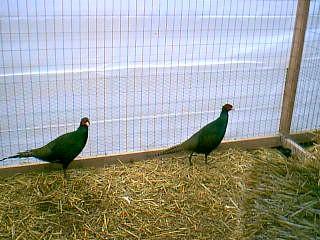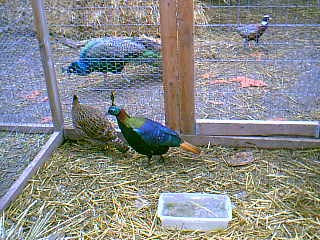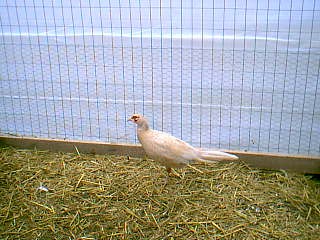|

The Ringneck is a bird
ready to burst into the air in seconds. Many people hunt the ringneck for its delicious tasting meat. They are also used to
train dogs. Males have a bright blue/green head, with a red patch that surrounds the eyes, a white ring surrounds the neck,
and the body is colored in copper, gold, redish brown, black, green, and maroon. They have long tails tan/brown with black
barring. Females are multicolored brown with some white, grayish, coloring.
During the breeding, season one male to
every 10 females. Hen's lay 100+ eggs per season, you can trick the hen into laying more under extended hours of light. Incubate
eggs at 99.5 degrees, with 85-87 degrees-wet bulb for 23-27days. Brood chicks at 95 degrees lowering the temperature 5 degrees
each week util they feather. As soon as chicks can be sexed, separate the males and females.
A pheasant eats aproxametly
15 pounds of feed in 20 weeks. I feed turkey starter to chicks and a Chicken layer ration to adults, and a supplement of grains
and corn in the fall. Keep feed and water full, provide penty of cover and green vegetation.




|

